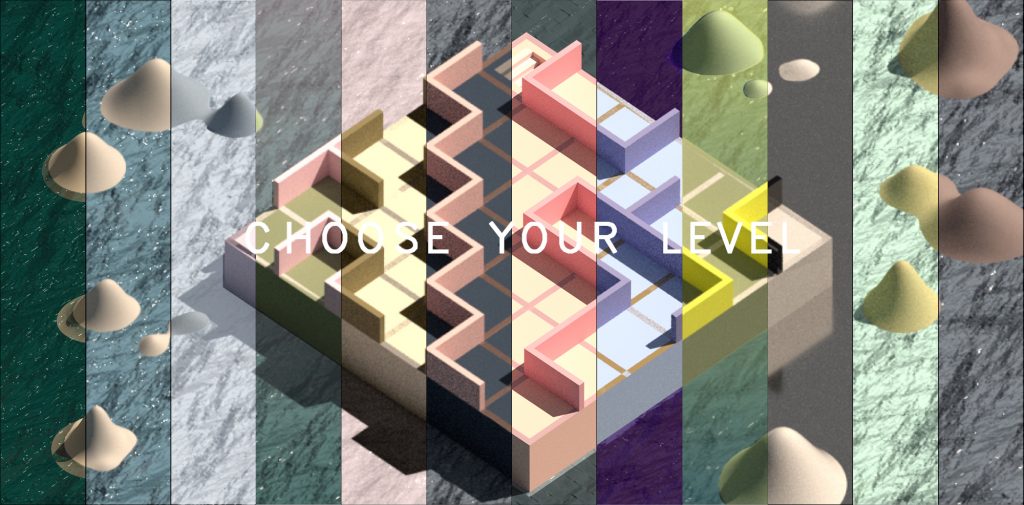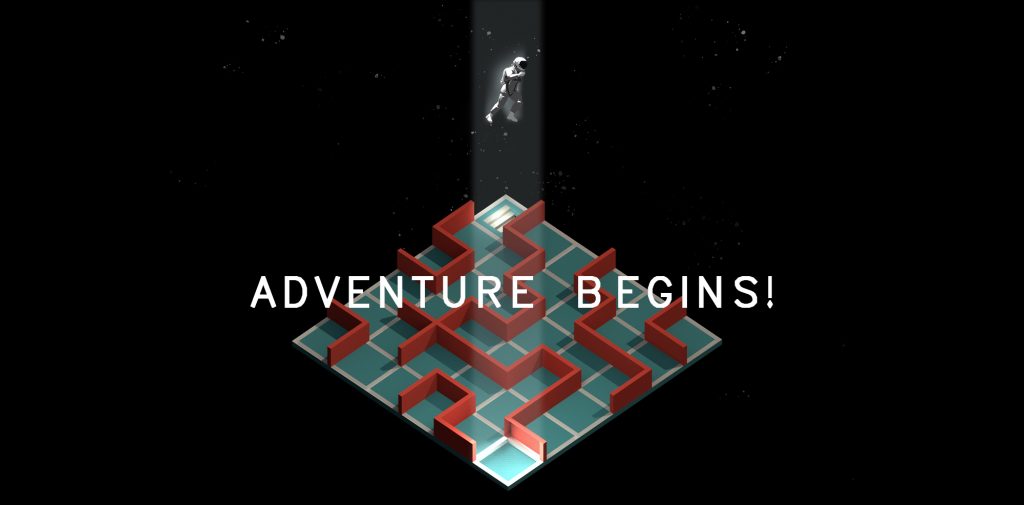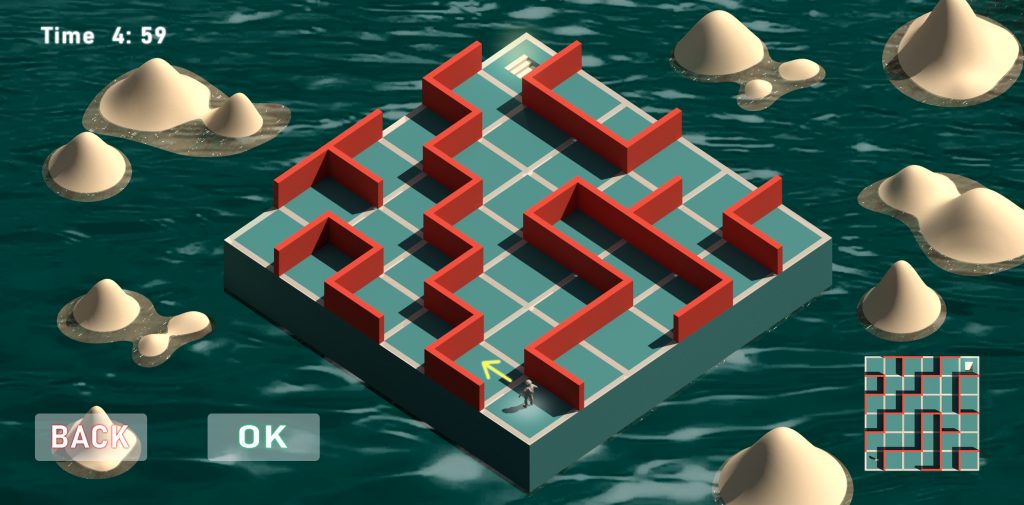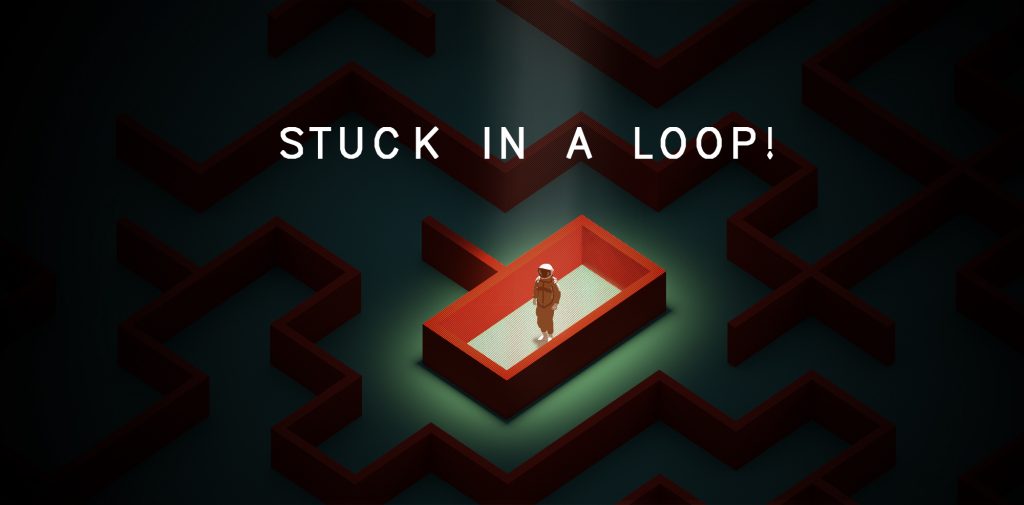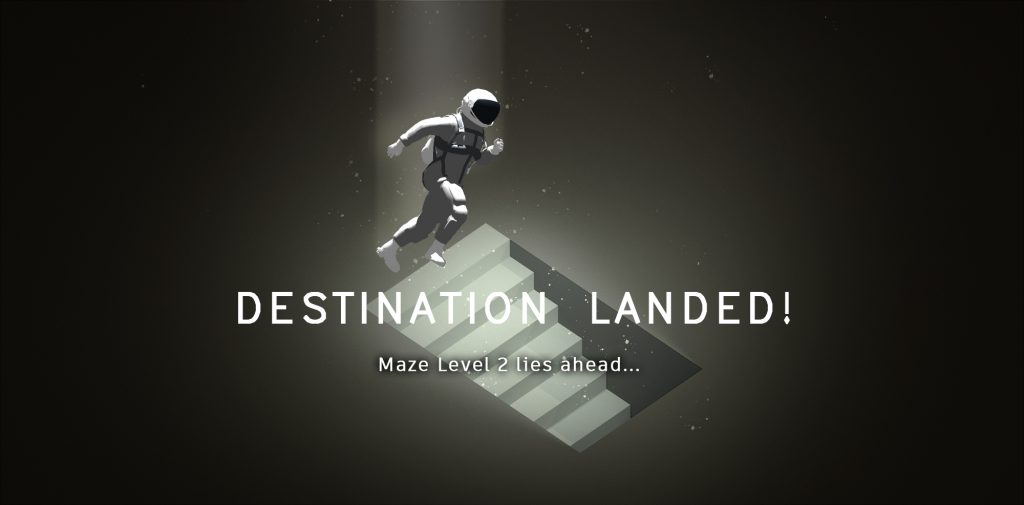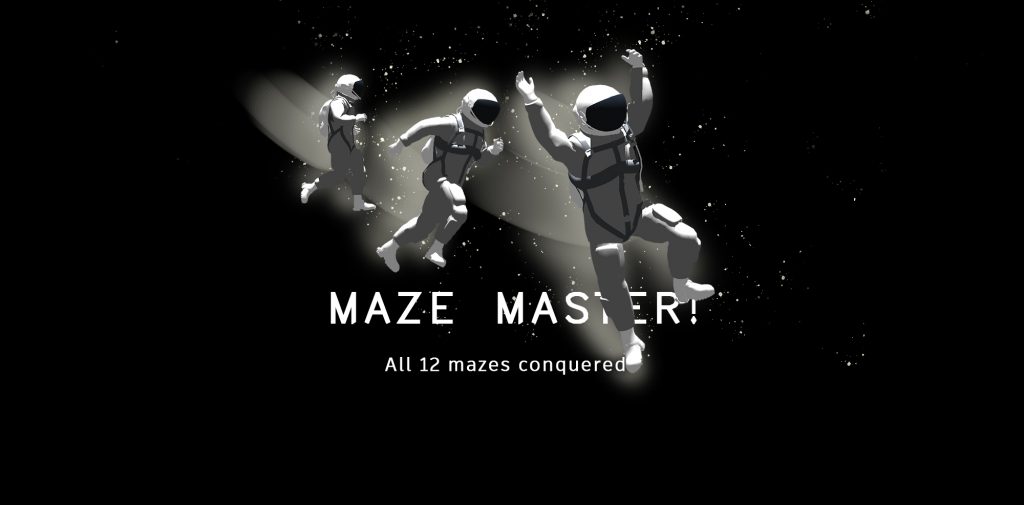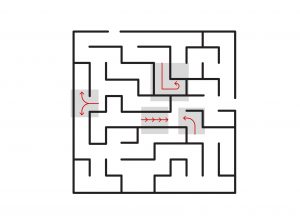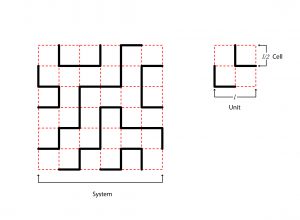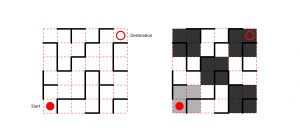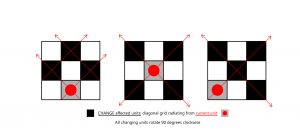In Collaboration with Yujie Wang
In Creativity and Cognition (C&C ’21). Association for Computing Machinery, New York, NY, USA, Article 20, 1–5. DOI:https://doi.org/10.1145/3450741.3466806.
In Proceedings of Art Machines 2: International Symposium on Machine Learning and Art 2021. School of Creative Media, City University of Hong Kong 10-14 June 2021.
“From Checkers to Complex Systems“, Exhibited at Chengdu Times Art Museum, 3.13 – 6.13, 2021, Chengdu, Sichuan, China
“Ocean 2.0“, Exhibition at Slime Engine, https://www.slimeengine.com/oc2/yiouwang-yujiewang
WebGL version: https://y-w.itch.io/moving-maze
The maze has been an architectural type designed for the purpose of gameplay for centuries. The Moving Maze redefines the game mechanics of the maze and introduces the instability of the spatial system over time. In the traditional maze, game mechanics is finding one solution path through a static structure whose disorienting potential wanes after one successful routing, where the player’s eureka moment of discovery only lasts once. In the Moving Maze system, the walls are animated strategically, constantly revolving in units to counter the player’s effort of navigation. The mechanics of the traditional maze is based on trial and error; that of the Moving Maze is a combination of chance and strategy. In achieving difficulty progression and game balance through Reinforcement Learning, the Moving Maze arouses problem-solving curiosity and immerses the player in a risk-reward structure. The digitized traditional maze is a puzzle game where the choice is vision-based; the Moving Maze is a composite genre of video games, in between a puzzle and an adventure game. It advances the discussion on mazes since it emphasizes through its game mechanics the intertextual agency of human and of the environment.
Systemic complexities arise from the simplest parts. Maze, an ancient category of gamified architecture, greatly demonstrates this tenet by being a multi-route disorienting system whose subdivided parts are so simple and so regular that they couldn’t be easier to understand. A brainchild of the system-parts philosophy, the Moving Maze is a maze that could move its parts methodically in response to the player’s movement, as if a chess player were vying with the chessboard. We designed a method that generates an unpredictable and self-renewable system with fragmental movement according to simple gamer-interactive rules, in which the gamer achieves the joy of navigating through discovering these moving rules and smartly rerouting with human-specific flexibility of mind.
The homogeneous unit and the random, infinite nature of the entire system form an interesting part-to-whole relationship. The maze is deconstructed into the non-subdivisible elemental unit, which can propagate through replication and orthogonal rotation into a field. The system by design reacts to the player’s movement by rotating its parts. On the macroscale, the maze is a field, a unique chess board where human is a chess piece; on the mesoscale, the maze is semiotic, perceived as passage, corner, junction, or deadend; on the microscale, it is a homogeneous, neutral, rotational unit. Along people’s movement, the interactive “chess board” adjusts itself incessantly, while the “chess piece” continues to re-navigate among the disorder.

